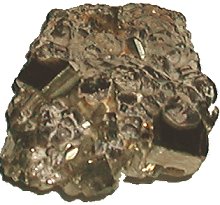
May Editorial
Pyrite nanoparticles from hydrothermal vents are a rich source of iron for microorganisms in the ocean deeps.

May Editorial
Pyrite nanoparticles from hydrothermal vents are a rich source of iron for microorganisms in the ocean deeps.
|
Colloquially known as 'fool's gold', pyrite (FeS2) is one of the most widely-distributed of sulphide minerals. It is an iron sulphide with a distinctive pale brass-yellow colour which strongly resembles gold. It can be found in igneous, sedimentary and metamorphic rocks. But more importantly in the context of this article, it is also commonly found in hydrothermal sulphide vents at the bottom of the ocean.
|
Every living organism needs iron for energy and growth. But where do bacteria and plants living deep in the ocean get their mineral supplements from? Recent research published online in Nature Geoscience suggests that pyrite particles released from hydrothermal sulphide vents may be the ocean’s fertilizer. | |
|
Previously it was thought that iron released from the thermal vents was rapidly oxidised and precipitated to become part of the ocean bed. But when George Luther and his colleagues from the University of Delaware analysed the iron content of high-temperature fluids emerging from vents in the East Pacific Rise and the Eastern Lau Spreading Center, they found large quantities of pyrite nanoparticles (nanoparticles are tiny particles about 1000 times smaller than the width of human hair). These pyrite nanoparticles—composed of iron and sulphur—account for up to 10% of the filterable iron in the samples which the scientists studied. The researchers believe that the pyrite is literally vaporised into these tiny bits of iron sulphide before leaving the vent. The particles are light enough to adhere to organic matter and are dispersed over a large area. Because pyrite nanoparticles are relatively resistant to oxidation in salty water, they can remain suspended in their natural form in the ocean as they travel further outward from the vent. Eventually the particles gradually oxidize, and as they do so they release iron, providing a rich source of the mineral in areas which are iron-deficient. Thus many ocean microorganisms depend for their iron on undersea vents which may be far from where they are eventually taken up and used. Reference Mustafa Yücel, Amy Gartman, Clara S. Chan, George W. Luther. Hydrothermal vents as a kinetically stable source of iron-sulphide-bearing nanoparticles to the ocean. Nature Geoscience, 08 May 2011. | |
| _______________________________ | ||||
| Home | | | Shopping | | | Database |
© Biscuit Software 2004-2015
All rights reserved